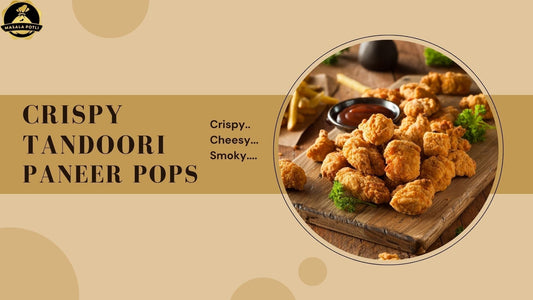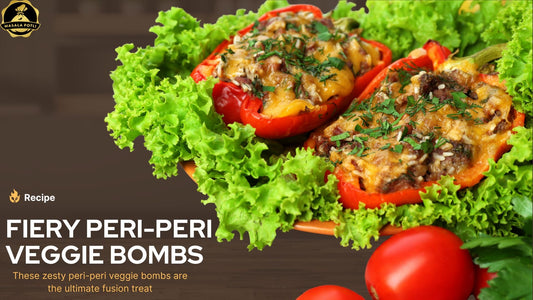Have you ever stood in the spice aisle wondering about the difference between chili flakes and red chili powder? You're not alone! Many home cooks struggle with this common kitchen dilemma, often picking the wrong spice and ending up with disappointing results.
Understanding when to use chili flakes vs red chili powder can transform your cooking from ordinary to extraordinary. Let's dive deep into this spicy showdown and help you make the right choice every time.
What Are Chili Flakes? The Complete Breakdown
Chili flakes are dried chili peppers that have been crushed into beautiful, visible red pieces. Think of them as the rustic cousin in the spice family – they're chunky, textured, and absolutely gorgeous when sprinkled on food.
Key Characteristics of Chili Flakes:
- Heat level: Mild to medium intensity
- Appearance: Visible red pieces with seeds
- Texture: Crunchy and coarse
- Flavor profile: Smoky, slightly sweet with gradual heat release
The beauty of chili flakes lies in their unpredictable heat distribution. Some pieces pack more punch, while others are milder, giving you a delightful surprise with every bite.
Understanding Red Chili Powder: The Kitchen Powerhouse
Red chili powder is finely ground dried peppers that blend seamlessly into your dishes. It's the workhorse of the spice world – reliable, consistent, and incredibly versatile.
Key Characteristics of Red Chili Powder:
- Heat level: Medium to hot intensity
- Appearance: Fine, uniform powder
- Texture: Smooth and easily mixable
- Flavor profile: Deep, rich, and concentrated
Unlike chili flakes, red chili powder provides even heat distribution throughout your entire dish, ensuring every bite has consistent spice levels.
Chili Flakes vs Red Chili Powder: The Ultimate Comparison
|
Features |
Chili Flakes |
Red Chili Powder |
|
Heat Level |
Mild to Medium |
Medium to Hot |
|
Texture |
Crunchy, visible pieces |
Fine, smooth powder |
|
Best Use |
Garnishing and finishing |
Cooking and mixing |
|
Heat Distribution |
Variable, bite-by-bite |
Even throughout dish |
|
Visual Appeal |
High (decorative) |
Low (blends in) |
|
Price Range |
Usually more affordable |
Varies by quality |
When to Use Chili Flakes: Perfect Applications
Chili flakes work best as finishing touches and when you want to add visual appeal to your dishes.
Ideal Uses for Chili Flakes:
- Pizza toppings – The classic Italian way
- Pasta garnish – Especially aglio e olio
- Salad dressings – Adds texture and mild heat
- Grilled meats – Beautiful presentation
- Soup garnish – Visual appeal plus flavor
- Bread dipping oils – Restaurant-style elegance
Popular Dishes Featuring Chili Flakes:
- Italian pasta dishes
- Greek salads
- BBQ grilled chicken
- Homemade pizza
- Mediterranean appetizers
Pro tip: Chili flakes let diners control their spice level – some bites will be spicier than others, making the eating experience more dynamic.
When to Choose Red Chili Powder: Best Applications
Red chili powder excels in cooking processes where you need consistent heat and flavor throughout the dish.
Ideal Uses for Red Chili Powder:
- Curry preparations – Essential for Indian cooking
- Meat marinades – Penetrates deep into proteins
- Sauce making – Smooth consistency
- Stir-fry dishes – Quick, even distribution
- Baking spiced treats – Uniform flavor
- Seasoning blends – Professional-grade mixes
Popular Dishes Using Red Chili Powder:
- Indian curries and dal
- Mexican salsas and tacos
- Korean kimchi
- Cajun seasoning blends
- Middle Eastern spice rubs
Common Questions About Chili Flakes vs Red Chili Powder
- Why Does My Dish Taste Different When I Switch Between Them? The concentration levels are completely different! Red chili powder is more concentrated, so you're likely adding more heat in a smaller amount. Chili flakes release heat slower and often carry a smokier, more complex flavor, especially if the seeds are toasted.
- Are Chili Flakes Always Milder Than Chili Powder? Not always! This depends entirely on the type of chili used. Flakes often seem milder because they include seeds and membranes, which can dilute the heat. However, chili powder's fine texture makes it more concentrated per teaspoon.
Which One Is Healthier?
Both are healthy in moderation! They're rich in capsaicin, a powerful anti-inflammatory compound. However, store-bought chili powder may contain:
- Added salt
- Preservatives
- Anti-caking agents
Chili flakes are often purer, especially if they're homemade or minimally processed.
Help! I Used Too Much Chili Powder – How Do I Fix It?
Don't panic! Here are proven methods to tone down the heat:
- Add dairy: like cream, yogurt, or coconut milk
- Balance with sweetness: honey or sugar works wonders
- Dilute with more main ingredients (extra vegetables)
- Serve with rice, bread, or dairy sides
- Secret weapon: Add fried potatoes and onions – they absorb excess heat beautifully
Why Do Restaurants Use Flakes for Garnish?
It's not just about looks (though they do make food Instagram-worthy!). Flakes provide:
- Subtle crunch and texture
- Controlled spice levels for diners
- Visual appeal without overpowering
- Burst of heat that doesn't dominate the dish
How to Store Chili Flakes and Red Chili Powder
Proper storage extends shelf life and maintains potency:
-
For Chili Flakes:
- Store in airtight containers
- Keep away from direct sunlight
- Shelf life: 2-3 years when stored properly
- Refrigerate in humid climates
-
For Red Chili Powder:
- Use airtight, moisture-proof containers
- Store in cool, dark places
- Shelf life: 1-2 years for maximum potency
- Check for clumping (indicates moisture)
Making the Right Choice: Quick Decision Guide
-
Choose Chili Flakes When:
- You want visual appeal
- Garnishing is the goal
- You prefer variable heat levels
- Making Italian or Mediterranean dishes
-
Choose Red Chili Powder When:
- Cooking curries or sauces
- You need even heat distribution
- Making marinades or rubs
- Baking spiced goods
Expert Tips for Using Both Spices
-
Maximizing Chili Flakes:
- Toast them lightly before using for enhanced flavor
- Add at the end of cooking to preserve texture
- Use as a finishing salt alternative
- Mix with olive oil for instant chili oil
Getting the Most from Red Chili Powder:
- Bloom in oil at the start of cooking for deeper flavor
- Mix with other spices for complex blends
- Use in wet marinades for better penetration
- Store in small quantities to maintain freshness
The Bottom Line: Both Have Their Place
Whether you're team chili flakes or team red chili powder, both spices bring unique magic to your kitchen. The key is understanding their strengths and using them appropriately. For visual appeal, textural interest, and controlled heat – choose chili flakes. For consistent flavor, smooth integration, and cooking applications – go with red chili powder.
Better yet, keep both in your spice arsenal! A well-stocked kitchen has room for both these spicy champions.
Ready to upgrade your spice game? Try premium, sun-dried chili flakes with no additives for that perfect pop of flavor and texture. Check out our pure chili flakes here and taste the difference quality makes in your cooking!




